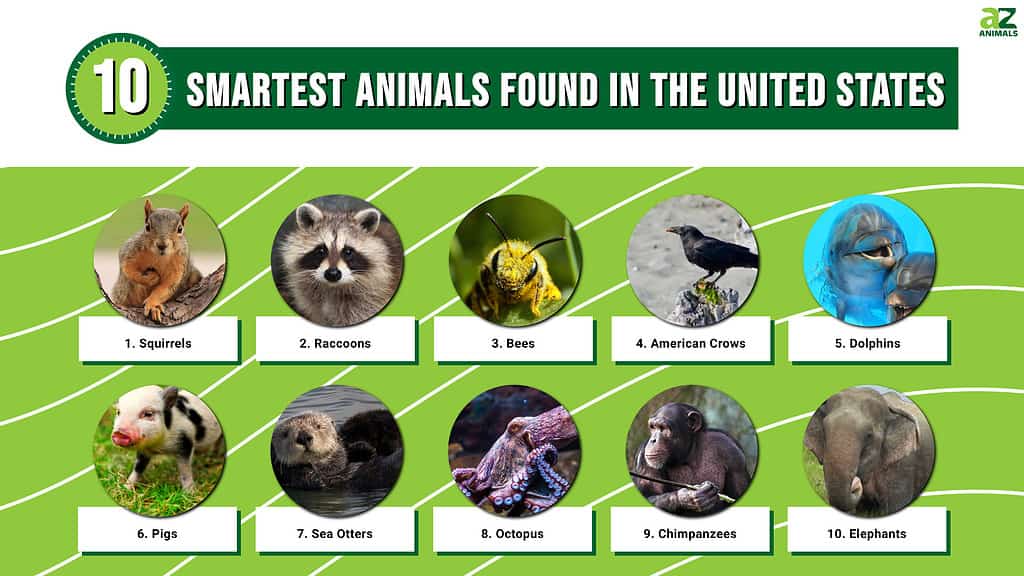
The United States is home to a huge range of wildlife, from majestic bears to nimble squirrels. Among these amazing creatures are some of the smartest animals on the planet. Although these animals may not be as smart as humans, they are smart in their way. From the use of tools to experiencing emotions and even complex problem-solving, here are 10 of the smartest animals found in the United States.
1. Squirrels
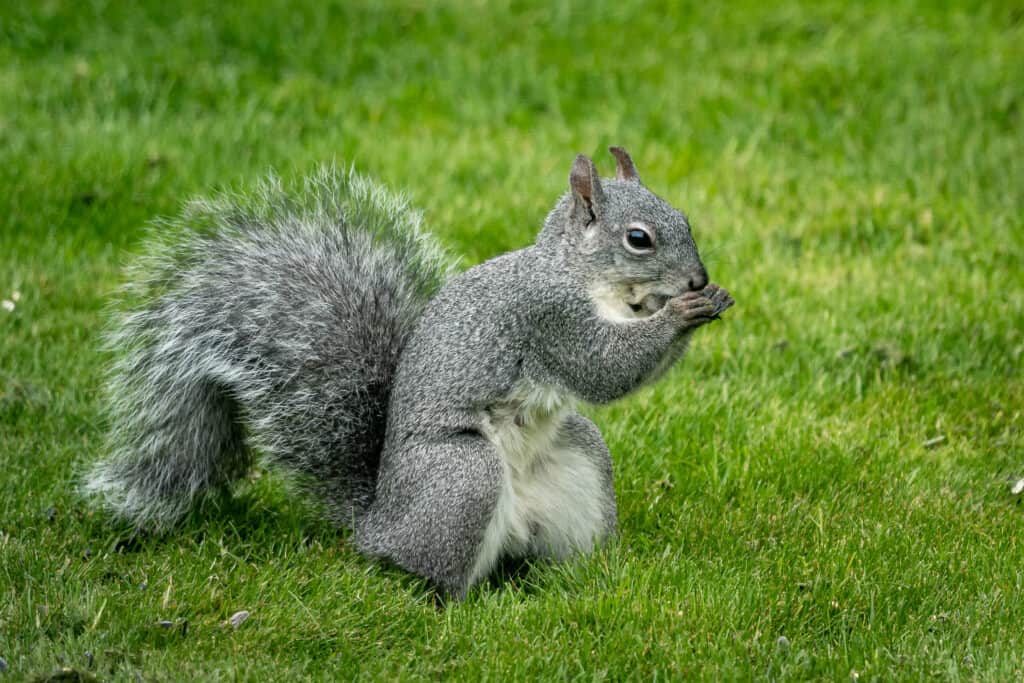
Their intelligence is shown when they put on elaborate fake food-burying displays to deceive onlookers and thieves.
©d murk photographs/Shutterstock.com
Squirrels may not be the first animal that comes to mind when you think about the smartest animals found in the United States, but squirrels are extremely intelligent. Squirrels are easily recognized by their long bushy tails and adorable faces. They are fast rodents and can climb trees well. These creatures live in almost every habitat, from rainforests to deserts.
The squirrel is predominantly herbivorous and feeds on a variety of seeds and nuts. However, some do consume insects and even small vertebrates. Their intelligence is shown when they put on elaborate fake food-burying displays to deceive onlookers and thieves. These fake burials trick thieves, such as other squirrels or birds, into thinking they have stored their food there. That is one smart way to keep the food all to yourself!
2. Raccoons
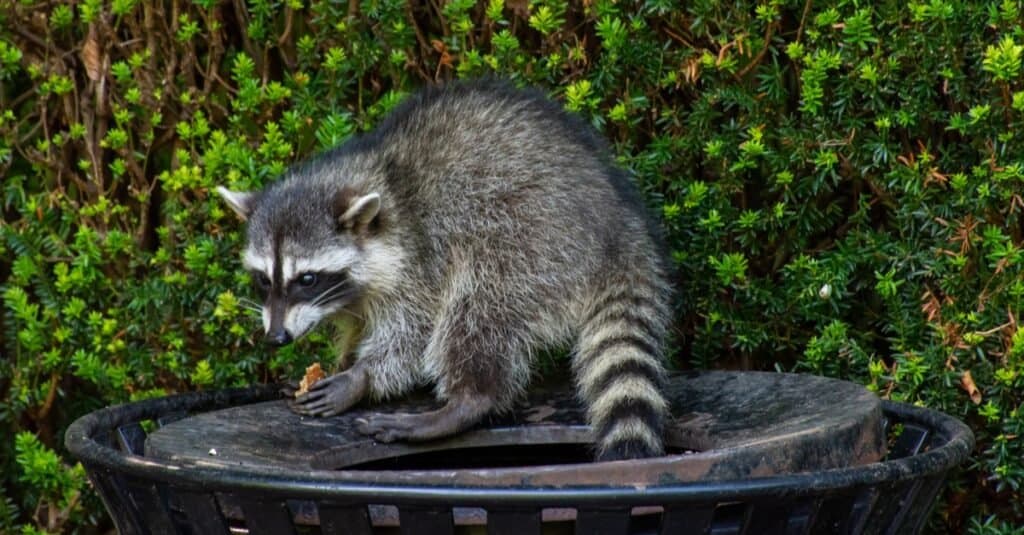
Raccoons display incredible intelligence and can problem-solve as well as adapt to new habitats.
©kingma photos/Shutterstock.com
Raccoons are also highly intelligent creatures. Studies have shown that these creatures can remember solutions to tasks for at least 3 years! Raccoons are so intelligent that they are known as one of the smartest animals in the world. These mammals are usually around 16 to 28 inches long (not including their bushy tail) and weigh between 10 and 60 pounds. They have extremely dexterous front paws and a beautiful ringed tail. They, of course, have their characteristic black fur around their eyes, contrasting with their white face coloring.
Raccoons are native to North America but have spread to other areas such as Japan and central Europe. Raccoons inhabit deciduous and mixed forests but are extremely adaptable to other habitats. Their diet consists of invertebrates, plant material, and vertebrates, and is therefore considered omnivorous.
Raccoons display incredible intelligence and can problem-solve as well as adapt to new habitats. Their curious nature lets them explore the world using their excellent dexterous hands. The raccoon is so smart that they are considered almost as clever as monkeys!
3. Bees
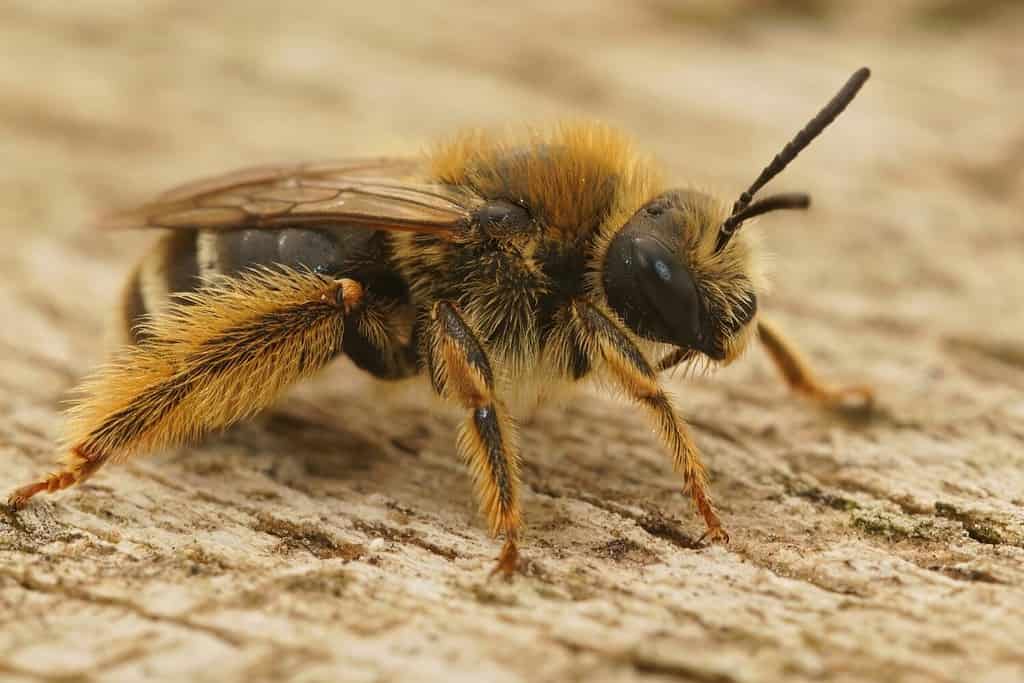
They have an extraordinary ability to navigate the wilderness in search of flowers and trees to collect their food.
©HWall/Shutterstock.com
Arguably one of the most important animals in the world, bees live in very organized colonies consisting of hundreds or thousands of workers, all ruled by a queen. The workers are tasked with exploring for nectar and pollen, caring for their young, and defending the colony and hive from threats. The queen bee has a single task: laying eggs and expanding the colony.
Although they play a huge role in the ecosystem, bees are relatively small and range in size depending on the type of bee. For example, honeybees are typically between 0.4 to 0.7 inches long, while bumblebees are a bit larger, up to 1 inch long. There are also several tiny-sized bee species – some as small as 0.07 inches!
You may not have thought that an insect could be considered a smart animal. However, bees fit the requirements! They have an extraordinary ability to navigate the wilderness in search of flowers and trees to collect their food and use their excellent memories to recognize and remember certain flowers and scents. Another aspect that makes bees so smart is their ability to work together as one with the colony. They perform a waggle dance to instruct other bees on finding recently discovered flowers.
4. American Crows
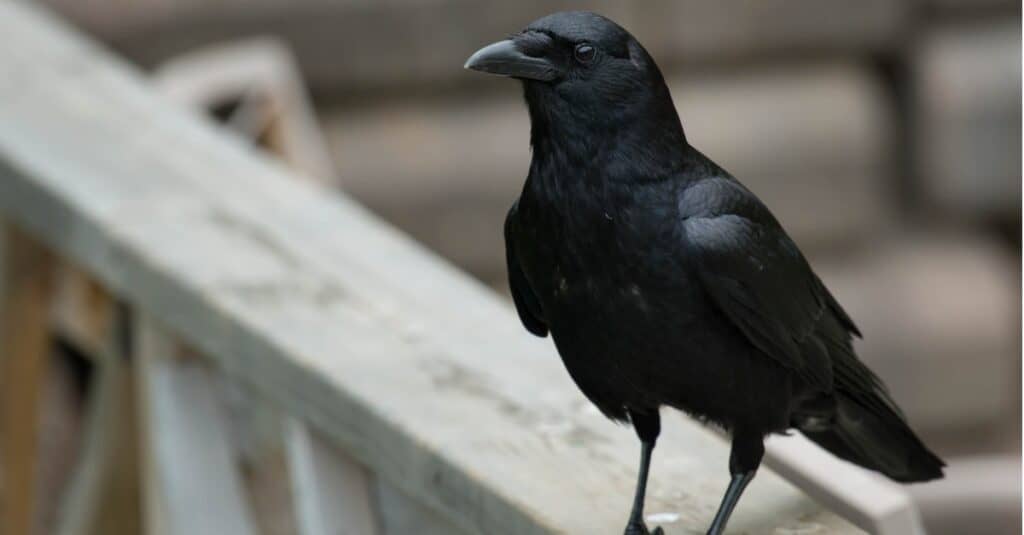
The American crow is so intelligent that it is one of the only few species of bird that has been observed using tools to get food!
©iStock.com/PaulReevesPhotography
The American crow is a large bird species commonly found throughout North America. These birds are known for their intelligence and amazing memories. The American crow can grow to around 16 to 20 inches in length and weigh between 11 and 21 ounces. They are entirely black with iridescent black feathers.
The American crow is omnivorous and feeds on invertebrates, human food scraps, fruits, nuts, fish, and more. These birds are active hunters and even prey on mice, rabbits, and frogs. The American crow is so intelligent that it is one of the only few species of bird that has been observed using tools to get food!
Not only are these birds capable of using tools, but they are great problem solvers and have incredible memories. Some even compare their intelligence to that of chimpanzees!
5. Dolphins
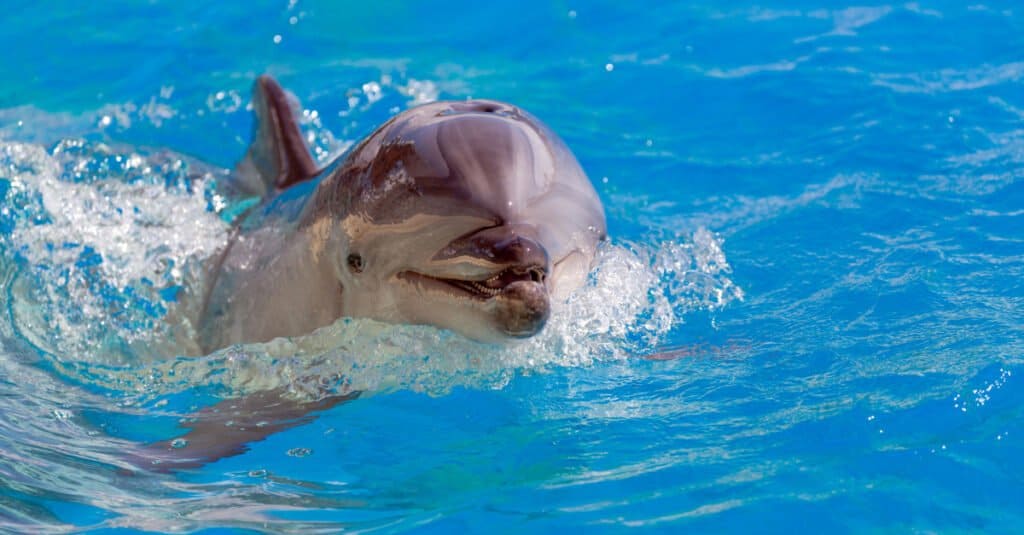
The communication between dolphins is one of the many reasons they are regarded as one of the smartest animals in the world.
©Lefteris Papaulakis/Shutterstock.com
Dolphins are highly regarded for their intelligence. You may even remember seeing trained dolphins at zoos and aquariums and watching them do tricks! There are many different species of dolphins, and the sizes range depending on the species. The smartest of these dolphins are the bottlenose dolphins, which, on average, weigh around 660 lbs. They can grow to around 13 feet long. Dolphins are generally dark gray with lighter gray flanks. They have long snouts, conical teeth, blowholes, dorsal fins, and torpedo-shaped bodies.
Dolphins are predators and feed mostly on fish and squid. They use teamwork to catch prey and hunt successfully. The communication between dolphins is one of the many reasons they are regarded as one of the smartest animals in the world.
So what can bottlenose dolphins do that make them so smart? These dolphins are capable of teaching, learning, grieving, mirror self-recognition, mimicry, memory, comprehension of gestures and gaze, numerical values, and more. Bottlenose dolphins even have a unique way of communicating with their peers!
6. Pigs
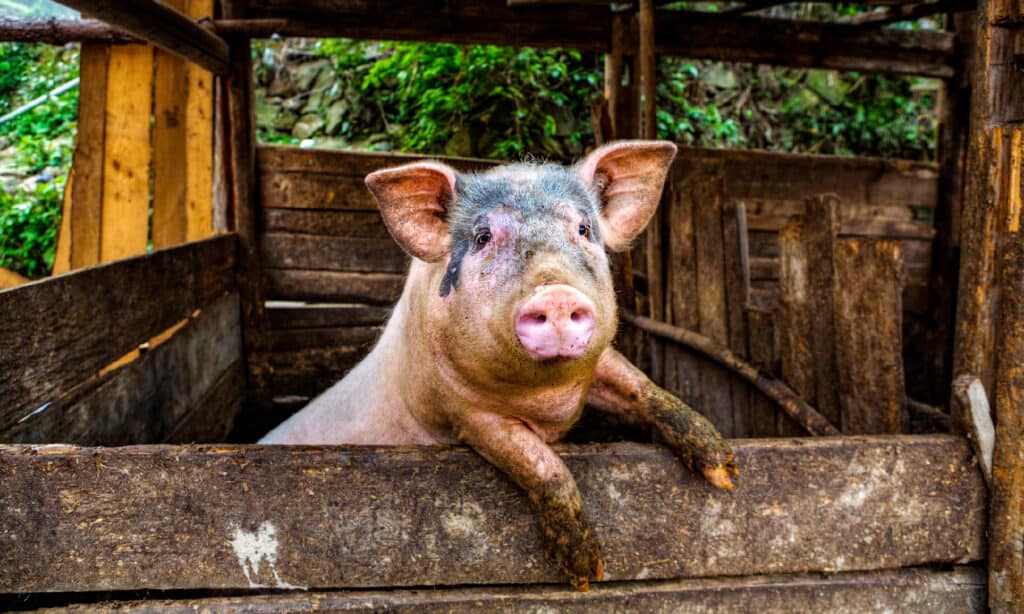
Pigs will communicate with each other using grunts and squeals and can even understand commands from humans.
©iStock.com/Grigorev_Vladimir
Another animal that is not usually associated with intelligence is the pig. These highly social animals can form very close bonds with other pigs and with humans too. Combined with their problem-solving skills, amazing memories, self-awareness, and even empathy, pigs truly lack the appreciation they deserve. The size and weight of these animals depend on their breed, but they can range anywhere from 40 pounds up to 750 pounds, with pigs bred for their meat weighing even more.
Pigs will communicate with each other using grunts and squeals and can even understand commands from humans. It is believed that some pigs are even smarter than dogs! They can remember the faces of people they have interacted with in the past, even after a very long time, and can experience fear or anxiety when in stressful environments – exactly how a human would.
Despite being such sentient animals, and while they make for amazing pets, truffle hunters, and show animals, their main use to humans is for food – a major industry throughout the world.
7. Sea Otters
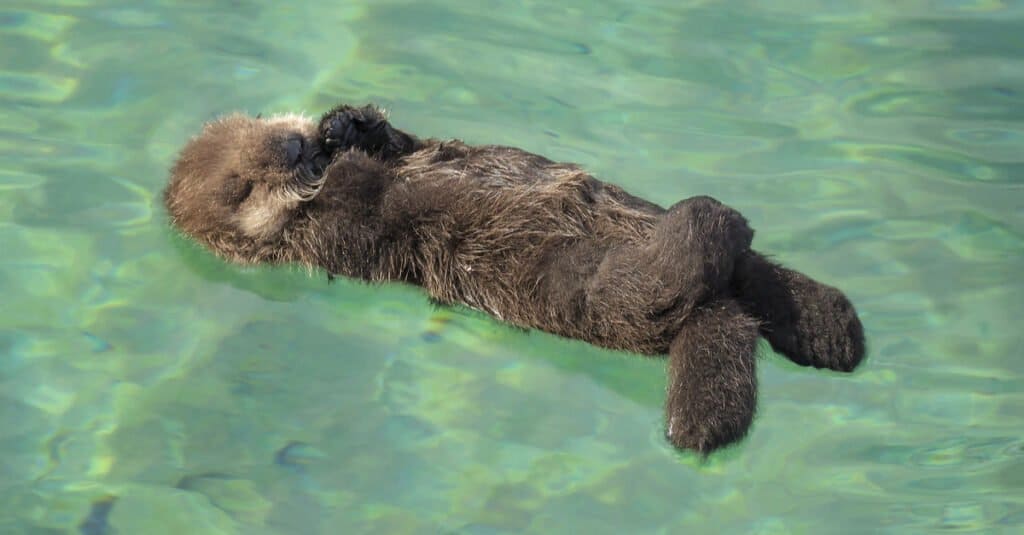
While in their raft, sea otters will hold hands with others when they sleep.
©Chase Dekker/Shutterstock.com
The sea otter is the smallest marine mammal in the world, weighing between 30 and 100 pounds and measuring up to just 4 feet long. They are very sociable animals and live in groups called rafts, some of which can reach up to 1,000 individuals! They are considered to be an important part of the aquatic ecosystem as they manage the population of sea urchins, which can cause large amounts of damage to kelp forests if left unchecked.
Sea otters are very well known for their use of tools. They will use rocks to break open shellfish and will even save their favorite rocks under their armpits to use again! While in their raft, sea otters will hold hands with others when they sleep and have even been observed using long strands of kelp to anchor themselves to prevent drifting away.
Sea otters have extremely dense fur, with 900,000 to 1,000,000 strands per inch! During the 18th and 19th centuries, these small mammals were hunted to dangerously low numbers for their prized fur. Today, however, they are considered a threatened species and are thankfully protected under the Endangered Species Act.
8. Octopus
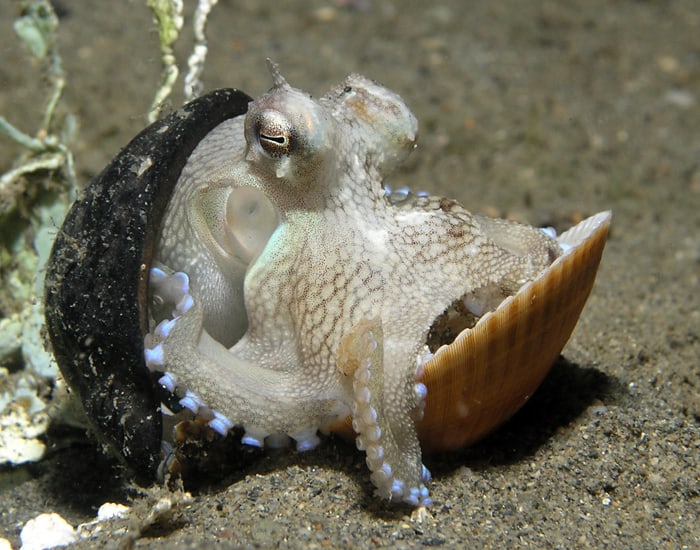
The octopus is a great escape artist. Their amazing eyesight, complex brains, and capacity to learn all aid the escape of the octopus.
Most people are already aware of the incredible intelligence of this marine creature. Octopuses can recognize individual human faces, use tools, solve puzzles, and more. These marine creatures are part of a group of mollusks without a shell. They are soft-bodied with eight limbs, a large head, and a beaked mouth at the center point of the limbs. The octopus’s body is nothing short of amazing – it can alter its shape and squeeze through small gaps. They can also use camouflage when hunting and to avoid becoming prey. Not only can they change color, but they can also change their texture!
Octopuses are predators and will feed mainly on crustaceans, other mollusks, fish, and prawns. Predators of the octopus include humans, fish, seabirds, sea otters, cetaceans, and more. Once they have been spotted by one of their predators, the octopus will let out an ink cloud to distract the predator. When under attack, the octopus can perform arm autonomy.
The octopus is a great escape artist. Their amazing eyesight, complex brains, and capacity to learn all aid the escape of the octopus. Their curiosity and creativity also show their great intelligence. Octopuses can undo screw-top jars, use tools, and even learn shapes and colors!
9. Honorable Mention: Chimpanzees
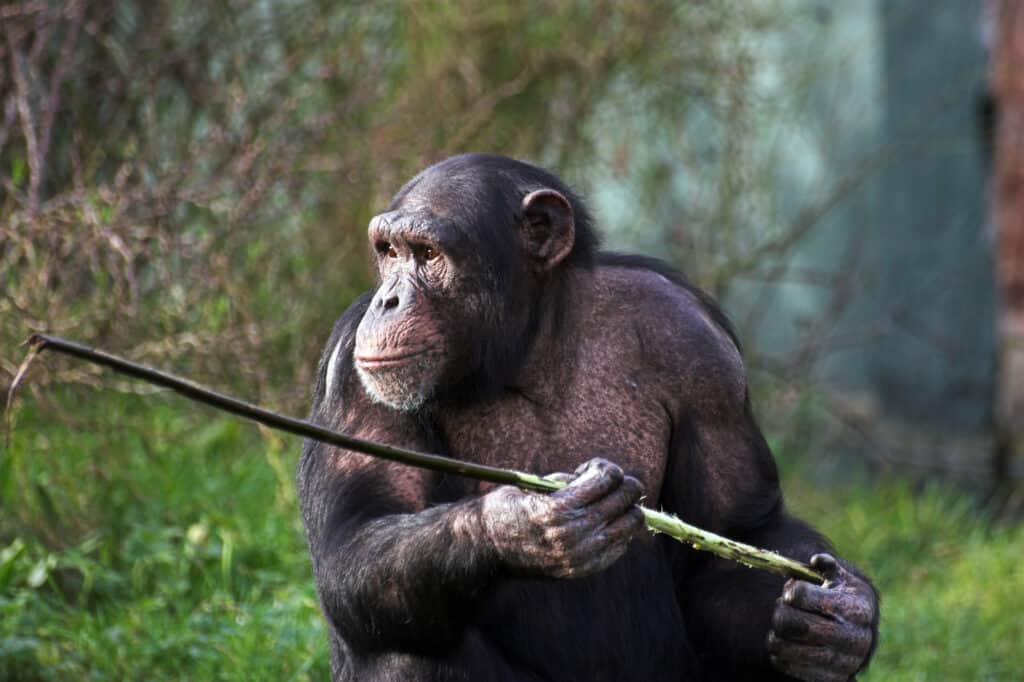
The chimpanzee can work with tools and is great at problem-solving.
©Norma Cornes/Shutterstock.com
While chimpanzees are not found in the wild in the United States, they can be observed in zoos throughout the country.
When you think about the smartest animals in the world, chimpanzees are sure to make your list. It is no surprise that these creatures are intelligent as they are humankind’s closest living relatives. Chimpanzees are a species of great ape that is native to Africa. They are covered in coarse hair that is typically black. However, their faces, fingers, toes, palms, and soles are bare. They can weigh between 60 and 155 lbs and stand around 4 ft 11 in tall. Their arms and fingers are long, and they have short thumbs and flat fingernails.
The chimpanzee is an omnivorous frugivore, which means it prefers fruit. However, these creatures also eat leaves, bark, seeds, resin, honey, insects, birds, other mammals, and more.
The chimpanzee can work with tools and is great at problem-solving. They are also able to communicate with complex vocalizations. One unique characteristic of the chimpanzee is that they are capable of empathy like humans!
10. Honorable Mention: Elephants
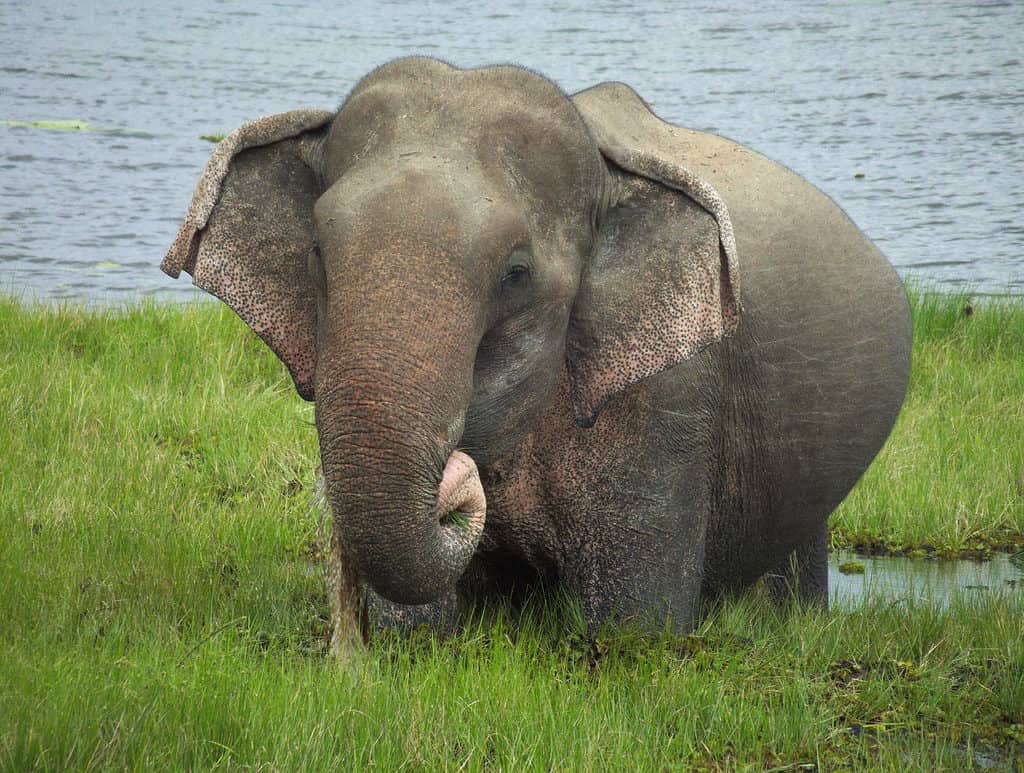
Because of the incredible size of the elephant’s brain, it is no surprise that these animals are smart.
©iStock.com/Lekamalage
Elephants are another animal that can technically be found in the United States in zoos.
Elephants are considered one of the world’s most intelligent animals. This should come as no surprise, as elephants have the largest brain of any land animal. These mammals have unique features – a characteristically long trunk and large ears, to name a couple. The trunk is used for many things including bringing food and water into the mouth and grasping objects. The ears help assist the elephants in maintaining a constant body temperature, and they also help with communication. The elephant is the largest living terrestrial animal. They can be anywhere from 6 to 11 feet tall at the shoulder. The weight of an elephant varies between species but can be between 2 and 7 tons.
Elephants inhabit savannahs, forests, deserts, and marshes. They are herbivores and eat grasses, leaves, shrubs, fruits, and roots. Because of how large elephants are, they generally do not need to worry about being preyed on. Only the young and the sick may be targeted as prey.
Because of the incredible size of the elephant’s brain, it is no surprise that these animals are smart. Elephants can express complex emotions and use tools. Not only that, elephants have incredible memories. They can remember food and water locations for long periods. They can also remember friends and enemies for years.
Summary of the 10 Smartest Animals Found in the United States
| # | Animal | Smart Behavior |
|---|---|---|
| 1 | Squirrels | Pretend to bury food to throw off potential thieves |
| 2 | Raccoons | Good at problem-solving and adapting to new habitats |
| 3 | Bees | Exceptional navigation abilities, teamwork, and communication skills |
| 4 | American Crows | Excellent problem-solvers with great memories and communication skills, use tools |
| 5 | Dolphins | Can learn, teach and communicate well |
| 6 | Pigs | Communicate, display empathy, fear and anxiety, excellent memory, can learn commands |
| 7 | Sea Otters | Use rocks as tools and store their favorite rock under their armpits, hold hands while rafting to keep from getting separated |
| 8 | Octopus | Can escape traps, unscrew jars and learn shapes and colors |
| 9 | Chimpanzees | Communicate through complex vocalizations, use tools, great problem-solvers, show empathy |
| 10 | Elephants | Express complex emotions and empathy, use tools, have great memories |
The photo featured at the top of this post is © nvphoto/Shutterstock.com
Thank you for reading! Have some feedback for us? Contact the AZ Animals editorial team.






